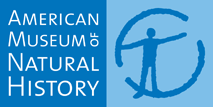All Resources
Book Chapter
In this lesson, children will experiment with different foods to determine bird preferences. Students will record and analyze data, and use the data to inform choices as they create their own bird feeders. Assessment criteria and connections to stand...
Book Chapter
In this lesson, children will observe similarities and differences among a group of seeds or beans. Students will sort the seeds or beans based on their observations. Assessment criteria and connections to standards are provided. In addition to the c...
Book Chapter
In this lesson, children will use their observation skills to describe the characteristics of different types of seeds that each fruit has. Children will classify fruits and seeds in different ways. Assessment criteria and connections to standards ar...
Book Chapter
In this lesson, children will make observations and comparisons of vegetables to understand that each comes from a part of a plant. Assessment criteria and connections to standards are provided. In addition to the complete lesson, this selection cont...
Book Chapter
In this lesson, children will observe and describe the physical properties of lima bean seeds and observe how the characteristics change when the seeds are soaked in water. They will observe and compare the germination of soaked and unsoaked seeds. A...
Book Chapter
In this lesson, children will discuss the needs of plants and use this information to design and construct a terrarium. Children will observe the terrarium over time to identify plant growth and other changes happening inside their terrarium. Assessm...
Book Chapter
In this lesson, children will understand that plants have distinct odors by observing different plant scents and characterizing these different types of scents (sweet smells, fruity smells, etc.). Assessment criteria and connections to standards are ...
Book Chapter
In this lesson, children will observe, describe, and compare pumpkins and generate a list of ways individual pumpkins are similar and different. In addition to the complete lesson, this selection contains the following book parts: Chapter 1, “Scien...
Book Chapter
In this lesson, children will observe, describe, and compare the different parts found inside a pumpkin. Assessment criteria and connections to standards are provided. In addition to the complete lesson, this selection contains the following book par...
Book Chapter
In this lesson, children will go on a nature walk to a local park (or around the school grounds) to observe and count the types of animals that live there and to learn about animals’ basic needs. In addition to the complete lesson, this selection c...
Book Chapter
In this lesson, children will observe and gain an appreciation for the diversity of birds in their local area. Children will compare different birds to identify the characteristics they have in common. In addition to the complete lesson, this selecti...
Book Chapter
In this lesson, children will investigate the school grounds to find different weeds and to identify the different places weeds can grow. In addition to the complete lesson, this selection contains the following book parts: Chapter 1, “Science for ...
Book Chapter
In this lesson, children will use their observation skills to identify what tree branches look like. They will then use the knowledge they gained from their investigations to put pieces of a tree branch back together. In addition to the complete less...
Book Chapter
In this ongoing unit of study, children will use their observation and comparison skills to understand that certain trees change throughout the seasons. In addition to the complete lesson, this selection contains the following book parts: Chapter 1, ...
Book Chapter
In this lesson, children will use their observation skills to closely examine leaves. Children will compare leaves, noticing that leaves can vary in size, shape, and color. In addition to the complete lesson, this selection contains the following boo...
Book Chapter
In this lesson, children will use their observation skills to find objects with similar characteristics while on an outdoor nature scavenger hunt. In addition to the complete lesson, this selection contains the following book parts: Chapter 1, “Sci...
Book Chapter
In this lesson, children will explore the outdoors to discover different objects in nature. Children will sort objects to learn about and identify different plant structures with particular attention to the parts of a flower. In addition to the compl...
eBook
This is the newest book in the bestselling Uncovering Student Ideas in Science series. Like the first edition of volume 1, this book helps pinpoint what your students know (or think they know) so you can monitor their learning and adjust your teachin...
Book Chapter
This is the newest book in the bestselling Uncovering Student Ideas in Science series. Like the first edition of volume 1, this book helps pinpoint what your students know (or think they know) so you can monitor their learning and adjust your teachin...
Workshop
Online Courses: AMNH Seminars on Science: Ecology: Ecosystem Dynamics and Conservation
How do scientists study ecosystems and grapple with real-world conservation questions? Learn about ecology and ecosystem dynamics using a systems thinking lens. Authored by world-class experts at the cutting edge of conservation biology, this six-wee...





